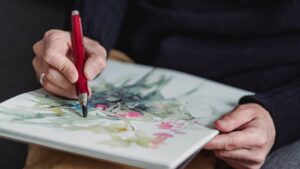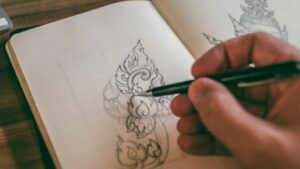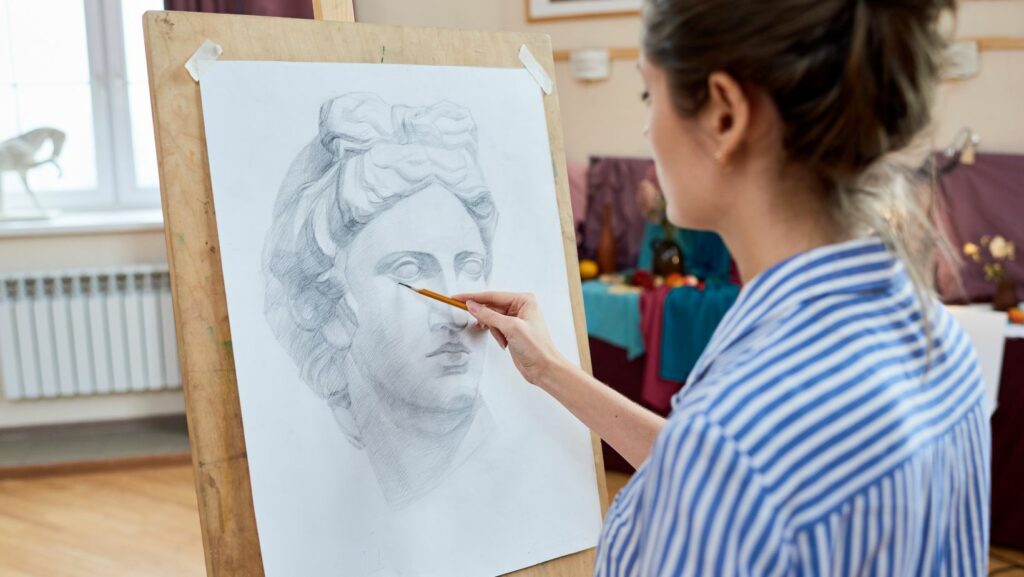Drawing can be a daunting skill to master, but it doesn’t have to be. Whether you’re a budding artist or someone looking to unwind with a pencil and paper, easy drawing techniques can help bridge the gap between complexity and capability. By focusing on simple methods and basic shapes, anyone can start creating art without feeling overwhelmed.
Easy Drawing
Easy drawing simplifies the art process, making it accessible and enjoyable for all betting skill levels. By using straightforward techniques and basic tools, anyone can begin to draw with ease.
Understanding the Concept
 Easy drawing focuses on breaking down complex images into simpler shapes and lines. This method helps beginners understand and replicate forms without getting discouraged by intricate details. It’s centered on the belief that everyone has the capacity to draw; it just takes practice and guidance to tap into one’s innate abilities. By starting with simple projects, such as doodling or sketching everyday objects, learners gain confidence and gradually improve their skills.
Easy drawing focuses on breaking down complex images into simpler shapes and lines. This method helps beginners understand and replicate forms without getting discouraged by intricate details. It’s centered on the belief that everyone has the capacity to draw; it just takes practice and guidance to tap into one’s innate abilities. By starting with simple projects, such as doodling or sketching everyday objects, learners gain confidence and gradually improve their skills.
Techniques and Tools
 When it comes to easy drawing, the techniques are straightforward and the tools are minimal. Essential techniques include:
When it comes to easy drawing, the techniques are straightforward and the tools are minimal. Essential techniques include:
-
Starting with Basic Shapes: Drawing starts with basic shapes like circles, squares, and triangles. Combining these shapes can help depict more complex objects.
-
Using Guidelines: Lightly drawn lines help maintain proportion and perspective, serving as a roadmap for your drawing.
-
Simplifying Details: Instead of focusing on intricate details, learners capture the essence of the subject through simple lines and forms.
As for tools, beginners need only a few affordable and readily available items:
-
Pencils: A simple graphite pencil (HB or 2B) is perfect for sketching.
-
Eraser: For correcting and refining drawings.
-
Paper: Plain white paper or a sketchpad will do.
-
Sharpener: To keep pencils in good working condition.
Together, these techniques and tools facilitate a stress-free drawing experience, allowing creativity to flourish without the burden of high costs or steep learning curves.
Benefits of Engaging in Easy Drawing
Stress Reduction
 Participating in easy drawing activities has proven effective in reducing stress. Focusing on simple shapes and lines allows individuals to shift their focus away from daily pressures and into a state of mindfulness. This practice not only decreases stress but also promotes a sense of personal achievement as they complete each piece. Studies indicate that engaging in artistic activities like drawing can significantly lower cortisol levels, the stress hormone, thus providing a calm and relaxing experience.
Participating in easy drawing activities has proven effective in reducing stress. Focusing on simple shapes and lines allows individuals to shift their focus away from daily pressures and into a state of mindfulness. This practice not only decreases stress but also promotes a sense of personal achievement as they complete each piece. Studies indicate that engaging in artistic activities like drawing can significantly lower cortisol levels, the stress hormone, thus providing a calm and relaxing experience.
Enhancing Creativity
Easy drawing fosters creativity by encouraging free expression without the boundaries of complex techniques. This form of art allows participants to experiment with different styles and materials without the fear of making mistakes. As individuals become more comfortable with basic drawing, they’re likely to explore more diverse and complex forms of artistic expression. Enabling this exploration, easy drawing serves as a catalyst for creative development, supporting the growth of problem-solving skills and innovative thinking.
Practical Tips for Beginners
Starting with Basic Shapes
 Every drawing starts with simple geometric figures such as circles, squares, and triangles. For instance, artists can sketch a tree by beginning with a rectangle for the trunk and circles for the canopy. This technique breaks down visually complex subjects into manageable parts, making it easier for beginners to understand and replicate. Tools needed include just a simple pencil and a piece of paper. Learning to draw basic shapes ensures a solid foundation, upon which more intricate details can later be built.
Every drawing starts with simple geometric figures such as circles, squares, and triangles. For instance, artists can sketch a tree by beginning with a rectangle for the trunk and circles for the canopy. This technique breaks down visually complex subjects into manageable parts, making it easier for beginners to understand and replicate. Tools needed include just a simple pencil and a piece of paper. Learning to draw basic shapes ensures a solid foundation, upon which more intricate details can later be built.
Graduating to Complex Forms
Once comfortable with basic shapes, beginners can evolve their skills by combining and modifying these forms to create more detailed illustrations. A basic circle can transform into an apple with the addition of a curved line and a leaf at the top. Gradually incorporating techniques like shading and texturing enhances the visual depth of these forms. Practice with these elements develops a beginner’s confidence and precision, facilitating their transition to tackle subjects of increased complexity such as human faces and dynamic landscapes. This gradual advancement keeps the learning curve gentle and enjoyable.

